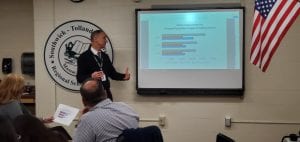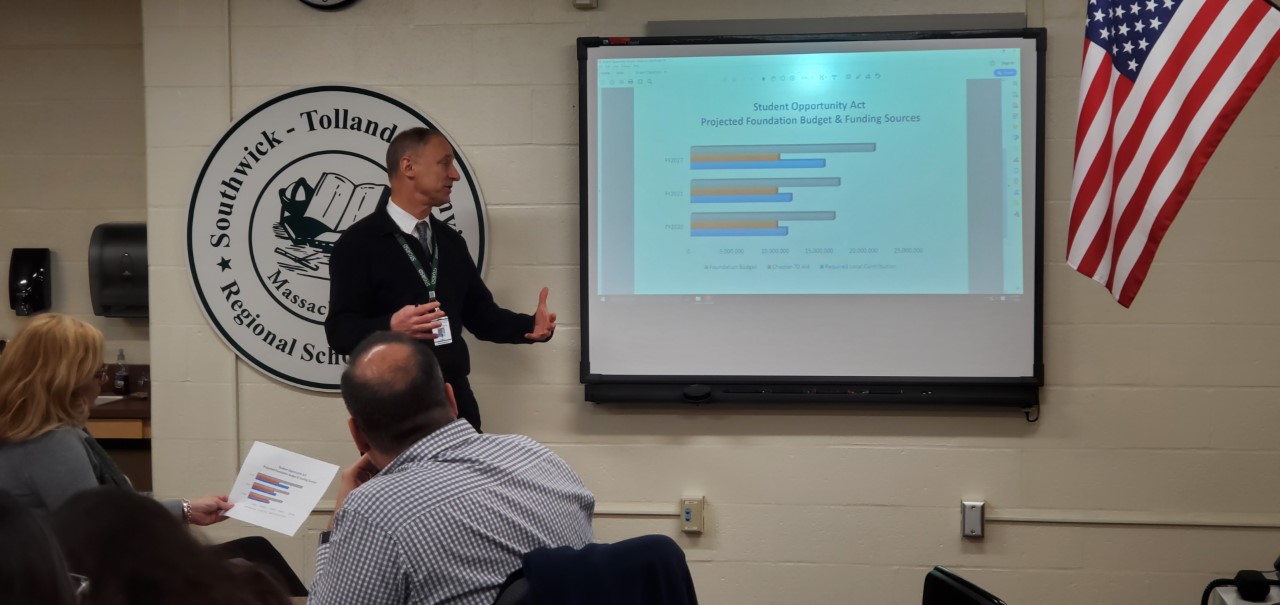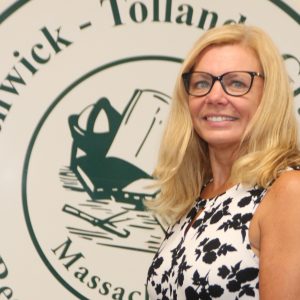
STGRSD Director of Finance and Operations Stephen Presnal explains the projected budget and funding sources resulting from the bill.. (Photo by Peter Currier)
Regional towns could contribute an additional $5 million
SOUTHWICK- The Southwick Tolland Granville Regional School Committee discussed the possible projected financial requirements behind the Student Opportunity Act Jan. 7 during the regular School Committee meeting.
The Student Opportunity Act, signed by Gov. Charlie Baker late in 2019, invested $1.5 billion towards education, with the bulk of the funds being sent to districts with a lack of funding or opportunities for the students. Southwick Tolland Granville Regional School District (STGRSD) Director of Finance and Operations Stephen Presnal said during the meeting that the STGRSD is a “low incidence” district, meaning it requires fewer funds as a result of this bill.
“We don’t high a high percentage of our students or their families who fall into that low income category,” said Presnal, “We don’t have a high incidence of English language learners.”
The bill requires a certain amount of incremental funding from several sources until 2027. In a presentation, Presnal projected that the required local contribution between the three towns in the district would increase by nearly $5 million. Chapter 70 aid is expected to remain largely the same, but the foundation budget is also expected to increase by about the same amount in that time period.
“The reason [Chapter 70 aid] is not growing at all is because they are already giving us more money than they feel we are entitled to,” said Presnal.
The district has reached target share, according to Presnal. That means that each of the communities has paid for its own share of the cost of education as determined by the state. In the case of Tolland, for example, that town pays for 82 percent of its education costs while the remaining 18 percent is paid by the state. A less affluent community may be asked to contribute less while the state contributes more.
“There is increased revenue from the three communities compared to where we were seven or eight years ago,” said Presnal.
Superintendent Jennifer Willard noted that rural school aid has not yet been received this year, and that it is not included in the projected budget yet. She said it would probably help each of the communities if the rural school aid would be factored into the foundation budget to help budget early in the year rather than receiving it at the end without being able to plan for it.






